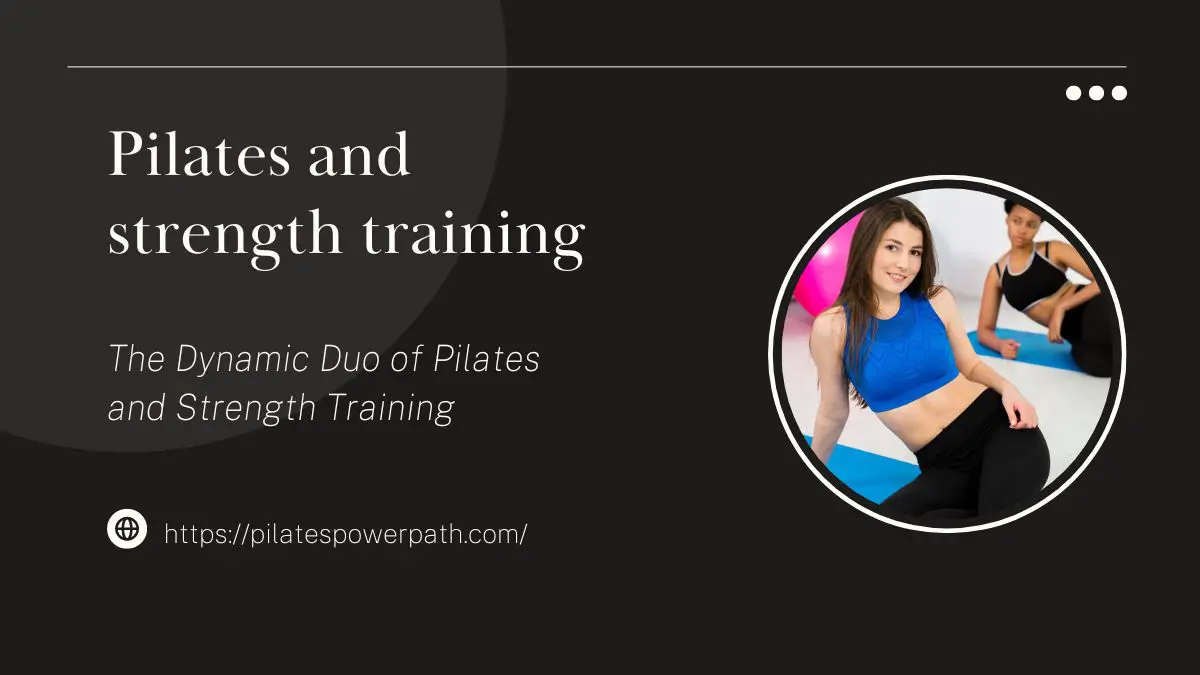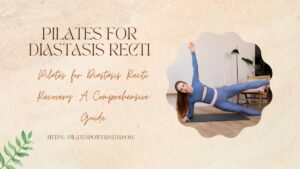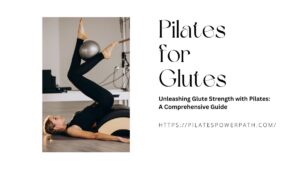Welcome to the world of fitness where dynamic movements meet strength and stability! In this blog post, we’re diving into the powerful combination of Pilates and strength training. Whether you’re a fitness enthusiast looking to level up your routine or a beginner eager to explore new avenues of wellness, the fusion of these two disciplines offers a comprehensive approach to achieving your health and fitness goals. Let’s embark on this journey of discovery and transformation together!
Understanding Pilates
History and Origins
Pilates, named after its creator Joseph Pilates, originated in the early 20th century as a system of exercises aimed at improving physical strength, flexibility, and posture. Initially developed as a rehabilitation program for soldiers during World War I, Pilates has since evolved into a popular fitness regimen embraced by individuals of all ages and fitness levels.
Principles of Pilates
At the core of Pilates lie its guiding principles: Control, Centering, Concentration, Precision, Breath, and Flow. These principles emphasize the mind-body connection, encouraging practitioners to perform movements with mindfulness and intention. Pilates promotes functional movement patterns and enhances overall body awareness by focusing on proper alignment and controlled breathing.
Read More: Transformative Power of Wall Pilates Before and After Journey
Benefits of Pilates
The benefits of Pilates extend far beyond physical fitness. Regular practice can lead to improved flexibility, enhanced core strength, better posture, and increased coordination. Additionally, Pilates is renowned for its ability to alleviate stress, promote relaxation, and foster a sense of inner calm. Whether you’re looking to sculpt your body, alleviate back pain, or simply unwind after a long day, Pilates offers something for everyone.
The Importance of Strength Training
Definition of Strength Training
Strength training, also known as resistance training, involves performing exercises that challenge your muscles against external resistance, such as weights, resistance bands, or body weight. Contrary to popular belief, strength training is not solely reserved for bodybuilders or athletes. It’s a fundamental component of any well-rounded fitness program, offering many benefits for individuals of all ages and fitness levels.
Benefits of Strength Training
The benefits of strength training extend far beyond simply building muscle mass. Regular strength training can increase bone density, improve joint function, enhance metabolism, and boost overall functional capacity. Moreover, strength training plays a crucial role in injury prevention by strengthening muscles, ligaments, and tendons, thus reducing the risk of strains, sprains, and other common injuries.
Myths and Misconceptions
Despite its numerous benefits, strength training is often accompanied by myths and misconceptions that may deter individuals from incorporating it into their fitness routine. Common misconceptions include the belief that strength training will make you bulky or that it’s only suitable for young, athletic individuals. In reality, strength training can be adapted to suit individuals of all ages, fitness levels, and body types, and it’s an integral component of overall health and wellness.
Pilates vs. Strength Training
Differentiating Between Pilates and Traditional Strength Training
While both Pilates and traditional strength training aim to improve physical fitness, they do so through different approaches. Pilates focuses on controlled movements performed with precision and mindfulness, emphasizing core strength, flexibility, and alignment. On the other hand, traditional strength training typically involves lifting weights or using resistance to target specific muscle groups, with an emphasis on building muscle mass and strength.
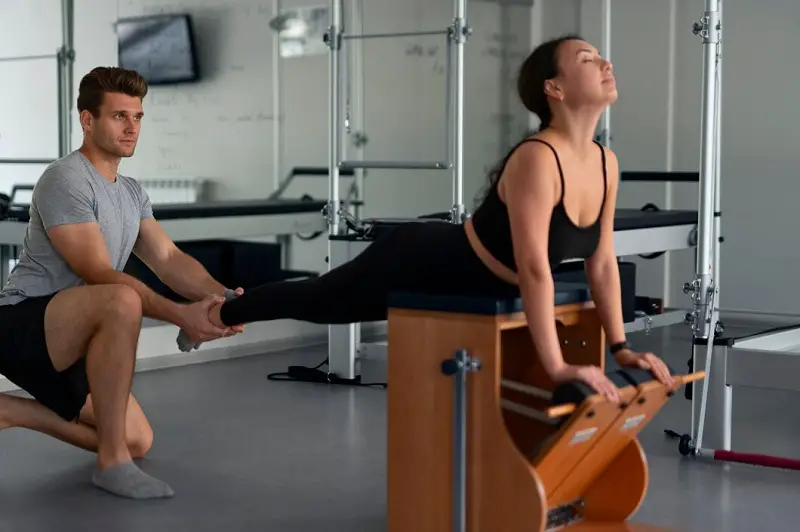
Comparing Benefits and Limitations
Each modality offers its own unique set of benefits and limitations. Pilates excels in promoting core strength, flexibility, and overall body awareness, making it particularly beneficial for individuals seeking improved posture, injury prevention, and enhanced mind-body connection. Strength training, on the other hand, is unparalleled in its ability to build muscle mass, increase strength, and boost metabolism, making it an essential component of any comprehensive fitness regimen.
How They Complement Each Other
Despite their differences, Pilates and strength training complement each other synergistically, creating a well-rounded approach to fitness. By combining the precision and control of Pilates with the strength and power of traditional resistance training, individuals can achieve optimal results in terms of strength, flexibility, and overall physical conditioning. Additionally, the holistic nature of Pilates can help mitigate the risk of injury often associated with traditional strength training, ensuring long-term sustainability and success.
Combining Pilates and Strength Training
Rationale Behind Combining the Two Modalities
The combination of Pilates and strength training offers a holistic approach to fitness that addresses the body’s needs from multiple angles. Pilates provides a strong foundation of core stability, flexibility, and body awareness, while strength training builds upon this foundation by increasing muscle mass, strength, and power. Together, they create a balanced and effective workout regimen that promotes overall health and well-being.
How Pilates Enhances Strength Training
Pilates can enhance traditional strength training by improving core strength, stability, and alignment, thereby enhancing the effectiveness of strength exercises and reducing the risk of injury. Additionally, Pilates exercises can target specific muscle groups that may be overlooked in traditional strength training routines, leading to more balanced muscular development and improved overall performance.
How Strength Training Enhances Pilates
Strength training can enhance the benefits of Pilates by increasing muscular strength and endurance, allowing practitioners to perform Pilates exercises with greater control and precision. Moreover, strength training can help individuals achieve their aesthetic goals by sculpting and toning their physique, complementing the lean and elongated muscles developed through Pilates practice.
Sample Workouts
Beginner’s Pilates and Strength Training Routine
For beginners, a combination of basic Pilates exercises and light resistance training is ideal. Start with Pilates mat exercises to establish core stability and body awareness, then incorporate simple strength training exercises using body weight or light resistance bands. Focus on proper form and technique, gradually increasing the intensity and duration of your workouts as you progress.
Intermediate Pilates and Strength Training Routine
For intermediate practitioners, incorporate a mix of intermediate-level Pilates exercises and moderate-intensity strength training exercises. Include challenging Pilates exercises that target specific muscle groups, such as the plank, bridge, and side plank variations, and incorporate resistance training exercises using dumbbells, kettlebells, or resistance machines. Aim to increase the intensity and complexity of your workouts while maintaining proper form and alignment.
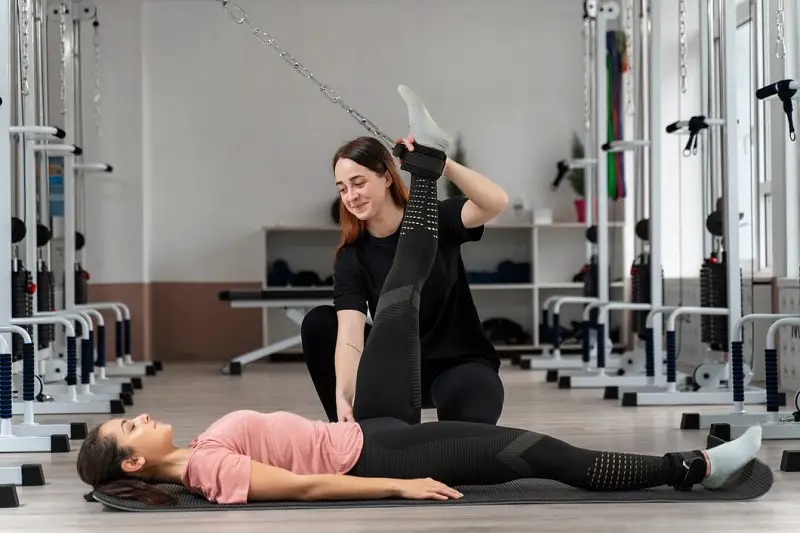
Advanced Pilates and Strength Training Routine
For advanced practitioners, integrate advanced Pilates exercises with high-intensity strength training exercises to maximize muscular strength, power, and endurance. Incorporate dynamic Pilates movements that challenge stability and coordination, such as the teaser, single-leg kick, and swan dive, and include advanced strength training exercises such as squats, deadlifts, and overhead presses. Focus on pushing your limits while maintaining proper form and breathing throughout your workouts.
Tips for Effective Training
Importance of Proper Form and Technique
Maintaining proper form and technique is essential to prevent injury and maximize the effectiveness of your workouts. Focus on performing each exercise with precision and control, paying attention to alignment, breathing, and muscle engagement. If you’re unsure about proper form, consider working with a qualified instructor or personal trainer to ensure you’re performing exercises safely and effectively.
Listening to Your Body
Listen to your body and honor its signals during your workouts. If you experience pain or discomfort, modify or discontinue the exercise and consult a healthcare professional if necessary. Pay attention to how your body responds to different exercises and adjust your workout accordingly to avoid overtraining or burnout.
Incorporating Variety
Incorporate variety into your workouts to keep them challenging and engaging. Experiment with different Pilates exercises, strength training modalities, and workout formats to prevent boredom and plateaus. Additionally, vary the intensity, duration, and frequency of your workouts to promote continuous progress and adaptation.
Common Mistakes to Avoid
Overemphasizing Quantity Over Quality
Avoid the temptation to prioritize quantity over quality in your workouts. Focus on performing each exercise with proper form, control, and precision, rather than rushing through repetitions or lifting heavier weights than you can safely handle. Remember that quality trumps quantity when it comes to achieving sustainable results and preventing injury.
Neglecting Rest and Recovery
Give your body adequate time to rest and recover between workouts to allow for muscle repair and growth. Overtraining can lead to fatigue, injury, and burnout, so listen to your body’s signals and incorporate rest days into your workout schedule. Additionally, prioritize sleep, hydration, and nutrition to support your body’s recovery process and optimize performance.
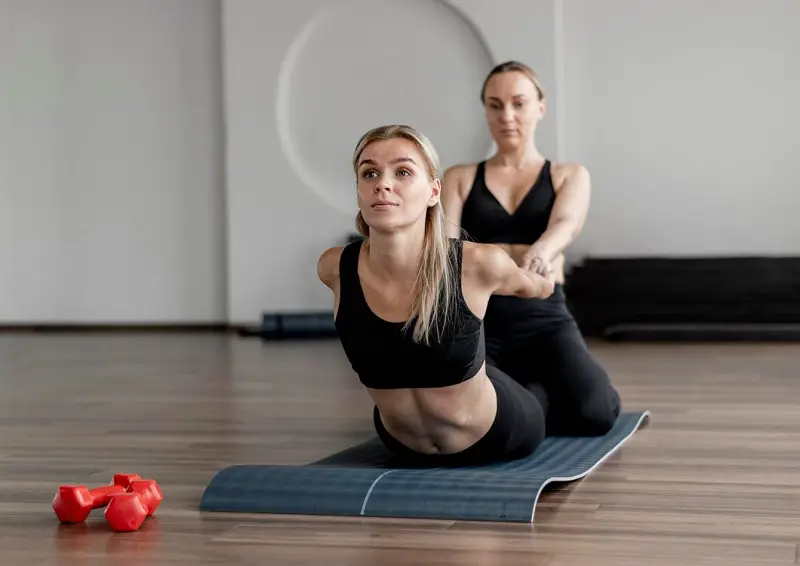
Skipping Warm-Up and Cool-Down
Never skip your warm-up or cool-down before and after your workouts. Warm-up exercises prepare your body for physical activity by increasing blood flow, loosening muscles, and lubricating joints, reducing the risk of injury. Similarly, cool-down exercises help your body gradually return to a resting state, preventing post-workout soreness and promoting muscle recovery. Incorporate dynamic stretches, mobility exercises, and foam rolling into your warm-up and cool-down routines to maximize their effectiveness.
Real-Life Success Stories
Testimonials from Individuals
“I never realized the transformative power of Pilates and strength training until I incorporated them into my fitness routine. Not only have I seen improvements in my strength, flexibility, and posture, but I also feel more confident and empowered in my body. It’s truly been a game-changer for me!”
Before-and-After Transformations
“Before starting Pilates and strength training, I struggled with chronic back pain and poor posture. However, after committing to a consistent workout regimen that combines Pilates and strength training, I’ve experienced significant improvements in my core strength, flexibility, and overall well-being. I feel stronger, more resilient, and more in tune with my body than ever before!”
Conclusion
In conclusion, the combination of Pilates and strength trainings offers a holistic approach to fitness that addresses the body’s needs from multiple angles. By integrating the precision and control of Pilates with the strength and power of traditional resistance training, individuals can achieve optimal results in terms of strength, flexibility, and overall physical conditioning. Whether you’re a beginner looking to kickstart your fitness journey or a seasoned athlete seeking new challenges, Pilates and strength training provide endless opportunities for growth, transformation, and self-discovery. So why wait? Embrace the power of Pilates and strength training and unlock your full potential today!
Frequently Asked Questions
While Pilates primarily focuses on building core strength, improving flexibility, and enhancing posture, it can indirectly contribute to weight loss by increasing muscle mass and boosting metabolism. When combined with a balanced diet and regular cardiovascular exercise, Pilates can be an effective component of a weight loss regimen.
Yes, strength training is suitable for beginners, provided they start with light weights or resistance bands and focus on mastering proper form and technique. Beginners should begin with basic exercises targeting major muscle groups and gradually increase the intensity and complexity of their workouts as they progress.
The frequency of Pilates and strength training depends on individual goals, fitness level, and schedule. As a general guideline, aim to incorporate each modality into your routine at least two to three times per week, with rest days in between to allow for recovery. Listen to your body and adjust your workout frequency as needed to avoid overtraining and burnout.

